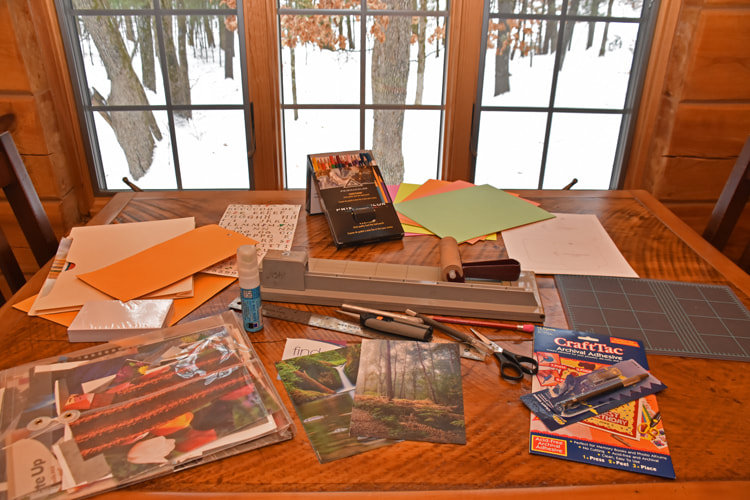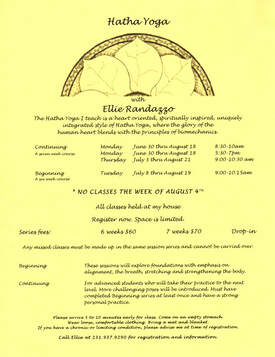 Peter Gibb Peter Gibb I’m happy to welcome Peter Gibb to HeartWood today. I met Peter when I took—and greatly enjoyed—his workshop, “The Joy of Mindful Writing,” at the Pacific Northwest Writers Association conference last fall.  Peter's award-winning 2017 memoir Peter's award-winning 2017 memoir Peter’s award-winning memoir, King of Doubt, is a beautifully-crafted story of self-discovery—a must-read for anyone who’s ever experienced self-doubt. (Is there anyone who hasn't?) When I learned he has a book on mindful conversation in the works, I cleared a space on my bookshelf in anticipation.  As he relates on his website, Peter grew up shy and isolated. Not exactly a conversational whiz. Eventually, though, he caught on to a few secrets that he honed and shared over a 22-year career of teaching, consulting, and coaching conversational skills “on 4 continents, in 3 languages, to Fortune 500 companies, to leaders of the emerging democracies in Eastern Europe, to doctors and bakers and just plain folks, hungry to learn.” I’m honored to have Peter as a guest today. At the end of his post, you’ll find a link to his website, where you can take a quiz to learn your dominant conversational style. I encourage you to check it out. I took the quiz and not only gained insights into my habits in conversation, but also got tips on tweaking those habits toward more effective and satisfying face-to-face communication. Now, here’s Peter . . . First, I’m delighted to be a guest on Nan’s blog. So much interesting talk happening here, and such important topics.  Great conversation brings satisfaction and success Great conversation brings satisfaction and success Is there any human activity that has the potential to bring us contentment and provide real connection, more than Great Conversation? Conversation is a master life skill. Essential for parenting, teaching, leading, making friends, getting along with colleagues, selling . . . you know, just about anything and everything you do will be more successful and more satisfying if accompanied by Great Conversation. But here’s the rub. Not all Conversation. In fact a great deal of conversation isn’t conversation at all. It’s just talk. Talk that does not bring us contentment or connection. Serial Monologue A great deal of talk consists of what I call “Serial Monologue.” This is talk in which two people, supposedly engaged in conversation, are actually just talking heads, listening mostly to their own voices. Rather than paying attention to what the other person is saying, they are more frequently:
Grabbing Response Further, when such talkers do respond to the speaker, the most frequent type of response is what I call a “Grabbing Response.” Here is an example: Person A: “I just got back from a great trip to San Diego with my family. We had a terrific time.” Person B: “San Diego, we were there in fall of ’17, but it was cold most of the time.” Person A: “The zoo was really wonderful. My Clara left saying she wants to become a Vet. I’ve never seen her so excited.” Person B: “Really. We take our kids to the zoo at least once a year.”  Some exchanges are more like football games than conversations Some exchanges are more like football games than conversations Person A is all excited to tell about her vacation, but Person B pretty much disregards everything that A says and launches into whatever story comes to mind. A conversation should be like a dance of connection, but in fact this one is more like a football game, each side trying to grab the ball and score points on some mythical scoreboard. Person B grabs the spotlight from A and changes the topic from A’s vacation to B’s cold vacation in San Diego and how one of the children is going to be a Vet. Instead of creating connection and contentment, this kind of talk fosters isolation and frustration. Neither talker feels heard or acknowledged. There is no real connection. What Ears Can Do We were given two ears but just one mouth. There must be a reason. The most critical ingredient for Great Conversation is “Deep Listening.” The first step toward deep listening is to get rid of grabbing responses and start using “reflective responses” instead. Imagine how different this conversation might have been, had it gone something like this: Person A: “I just got back from a great trip to San Diego with my family. We had a terrific time.” Person B: “You sound so excited. San Diego. What made the trip so exceptional?”  Reflective response is the first step toward deep listening Reflective response is the first step toward deep listening This is a “reflective response.” There are many types of reflective response, too many to go into here. They all validate the speaker, mirroring back some aspect of what the speaker has said and often inquiring for further about the topic. Note that in this particular response, Person B validates a feeling (excited) and then inquires for more detail (what made the trip so exceptional?) There is no telling my own story, or giving advice, or judgment, or distraction. It’s basically listening, reflecting and inquiring. Simple? Well, not always, but what a difference it will make. The Power of Listening Learning to become a more conscious, committed listener is the single most important step you can take to move your conversation from talk to connection and ultimately to “Great Conversation.” So what exactly is great conversation? Well, that’s a longer conversation. The best I can do in this short time is to say that it’s a skill we can all develop. It’s based on four values whose first letters spell the word C.A.R.E.
 If you’d like to learn more about Great Conversation, please visit my web site, http://www.petergibb.org/. Scroll down a bit on the home page, and you’ll see an invitation to take the “Conversational Style Assessment,” a short survey that will help you discover your dominant conversational style. You’ll learn which of four basic conversational styles (Observer, Nurturer, Performer, and Explorer) is your default mode. You’re not locked into any one style for life. You can change your conversational style, but knowing your default style can help you to get oriented and on the path to Great Conversation. Take the assessment and you’ll get a personalized report back from me. I also have a blog that discusses issues of Great Conversation once or twice per month, and a forthcoming (but not for at least 18 months) book, titled Beyond the Weather: 5 Steps to Great Conversation. If you’d like to be notified when the book is released, please sign up on the drop down form on my web site, or email me: [email protected] Thanks for Listening. I hope to visit with you again.
Peter
2 Comments
 The ever-crafty Val The ever-crafty Val In the days leading up to my recent birthday, colorful envelopes began appearing in our mailbox. Guessing they were birthday cards, I set them aside to open on the actual day. Except for one. More a card-sized parcel than an ordinary envelope, it intrigued me with its cobbled-together lumpiness. When I noticed it was from my uber-creative friend Val in North Carolina, I couldn’t resist opening it right away. In an earlier email exchange, Val had told me about her latest obsession: making “junk journals” and altered books from bits of this and that. I had no idea that junk journaling is a thing, but it is. Val confessed she’d gotten wrapped up in YouTube videos showing how to make the whimsical little assemblages. More on those videos in a moment, but back to that mysterious envelope.  The front cover of the junk journal my friend Val made for my birthday The front cover of the junk journal my friend Val made for my birthday Inside, I found a mini-journal filled with a most imaginative and personalized assortment of miscellany. The cover was fashioned from a small manila envelope, folded in half, with one end left open to form a pocket for stowing notes and mementos. Val had covered the outside with a tropical print reminiscent of Samoa, where we met as teenagers in the 1960s. Inside were more pockets and envelopes made from magazine and catalog pages, sheet music, and so on, and stuffed with little treasures: maps of Samoa and my home state of Oklahoma, a recipe for Michigan Party Cheese Bake, clipped from some fundraising cookbook, plus other scraps and tidbits with special meaning to the two of us. In the center was a two-page spread of another tropical scene, with Val’s face smiling from the window of a beach house and two little figures like the ones that populated the cartoons she used to draw in our Samoa days. My birthday journal was a delight from cover to cover, one that I’ll enjoy looking through again and again.  Once you venture into junk journaling, you may find yourself desperately needing things you never even knew existed, like this corner-rounding punch Once you venture into junk journaling, you may find yourself desperately needing things you never even knew existed, like this corner-rounding punch At Val’s prompting, I decided to try my hand at junk journaling (fully aware that the last thing I need right now is another project, but rationalizing that a hands-on activity would provide a good and necessary break from all the writing and book-related work that’s consuming my life these days. Sound convincing? I thought so.) A junk journal is really whatever you want it to be, but it usually includes some combination of words, pictures, and other memorabilia, such as brochures, ticket stubs, maps, calendars, cards, or whatever else you want to include, all assembled in a helter-skelter way. The idea appealed to my passion for making collages and my tendency to hoard paper memorabilia with which I have no idea what to do. But before I plunged in, I felt like I needed at least a little guidance. That’s how I found myself in the online realm of junk journal inspiration. It soon became clear that, like scrapbooking, junk journaling is one of those hobbies people can go a bit overboard on. I found photos of amazingly—and intimidatingly—elaborate journals, along with lists of all sorts of paraphernalia one might want to purchase, either to decorate the journal (where’s the “junk” in that??) or to use in crafting the journal: pre-made pockets, special paper cutters, fancy papers, bookbinding twine. Yeesh. This is why I tend to stay away from Pinterest and crafting blogs. They’re inspiring, yes, but they also feed my insecurity when I start comparing my slapdash efforts to other people’s lavish creations. What’s more, have you noticed that it’s virtually impossible to find written instructions and diagrams for anything anymore? Learning how to do even the simplest thing requires watching a YouTube video. Or several.  I used Val's design as a model, copying her open-ended manila envelope cover I used Val's design as a model, copying her open-ended manila envelope cover I could see hours, if not days, swirling down the drain. So I set limits. I would watch only enough to learn a couple of things: How to make origami envelopes and library card-style pockets. Then I’d figure out the rest by studying Val’s example and just winging it. This decision also helped with the intimidation factor. Junk journals are supposed to be messy, but some people’s messy still comes out looking a lot more artful than mine. The sooner I stopped looking at videos and started doing my own work, the happier I’d be.  On a snowy afternoon, I gathered up paper, glue, scissors, magazine clippings, and other supplies to make my first junk journal On a snowy afternoon, I gathered up paper, glue, scissors, magazine clippings, and other supplies to make my first junk journal I chose a theme for my journal: Yoga and meditation. Now, here’s where it gets a little woo-woo. I went looking for card stock to use for my journal pages and found a stash left over from previous projects and recycled from other purposes. For my first page, I chose a pale yellow piece that seemed to stand out from the others. I had noticed that some of the pieces of card stock had color on only one side, with gray on the back, so I turned over the yellow piece to see if it had color on both sides.  The other side The other side Here’s what I found on the “back,” which had originally been the front: A flyer for classes taught by our beloved yoga teacher Ellie, whose death two and a half years ago devastated our community. Of course I wouldn’t sacrifice that flyer to make an ordinary page, but I’d find a way to give it a special place in the journal. What else I included: Pockets holding decorated cards, with spaces on the backs for writing thoughts or inspiring words I come across in my reading; a freehand mandala I drew when I was going through a mandala-drawing phase; a collection of cards representing the seven chakras; a print of a collage I made for Ellie and another one that she especially liked; an origami envelope, made from Yoga Journal pages, into which I tucked a card with the names of my yoga friends.  I’m still putting together my junk journal, and even when it’s “finished,” it’ll still be a work in progress—something I can add to whenever I find something that fits. Will I make others? That remains to be seen, although I already have ideas for several. Will you make one? I hope so. And if you do, send me pictures, and I’ll share them in an upcoming blog post. Want to know more about junk journals? Check out these websites:
A Beginner’s Guide to Junk Journaling Junk Journal Tutorials For Beginners What is a Junk Journal? Junk Journaling 101 for Beginners |
Written from the heart,
from the heart of the woods Read the introduction to HeartWood here.
Available now!Author
Nan Sanders Pokerwinski, a former journalist, writes memoir and personal essays, makes collages and likes to play outside. She lives in West Michigan with her husband, Ray. Archives
April 2022
Categories
All
|













 RSS Feed
RSS Feed